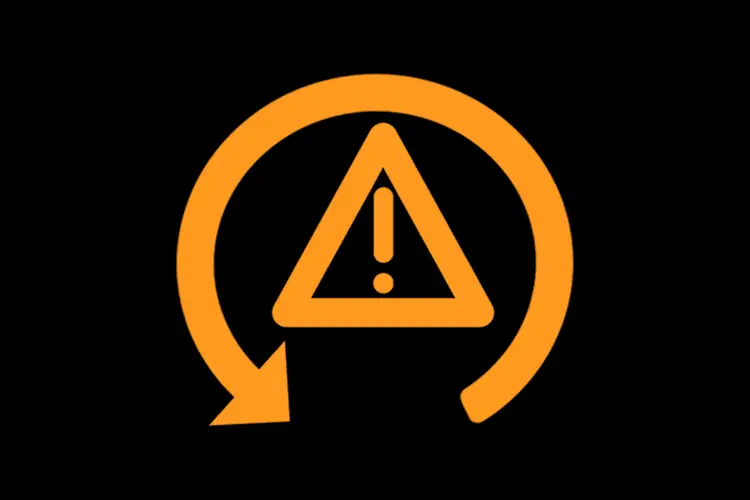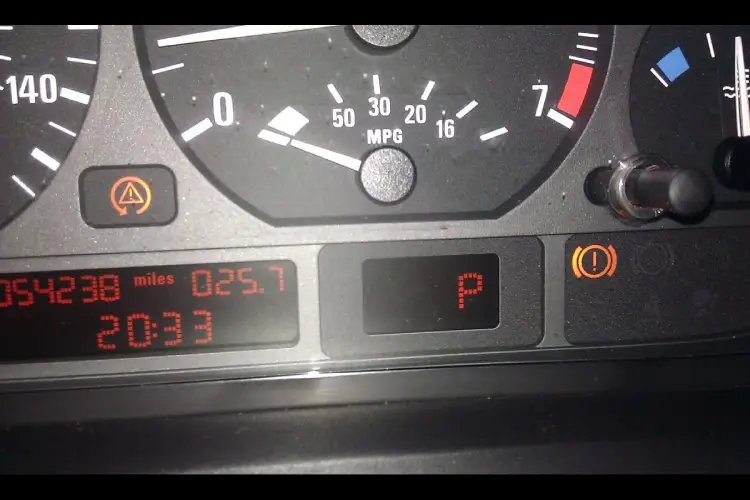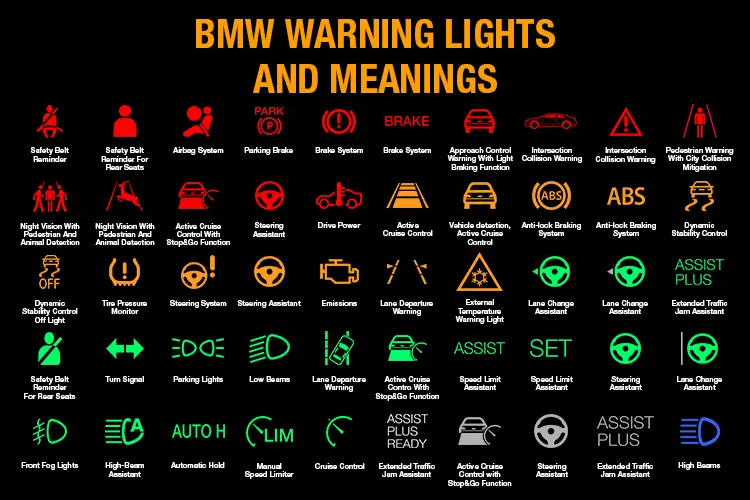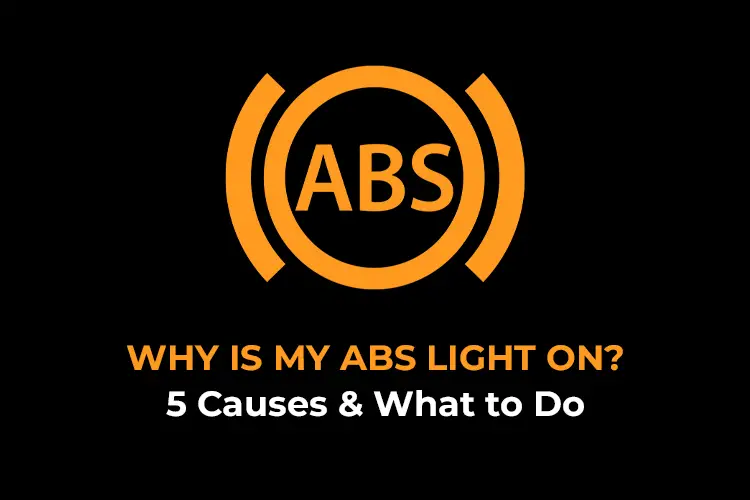Seeing the Yellow Triangle Warning Light on your BMW? Curious about:
- What’s the deal with that yellow triangle?
- Why it lights up?
- What steps to take when it appears?
Don’t fret; I’m here to unravel this signal and guide you through the steps you should take if you ever encounter it. Think of me as your experienced mechanic friend who’s here to lend a hand.
Let’s start by delving into its meaning!
What Does the BMW Yellow Triangle Warning Light Mean?

The BMW’s yellow triangle warning light is usually a sign of the Dynamic Stability Control (DSC) system. This system is a crucial component of your vehicle’s safety features, designed to help you maintain control during challenging driving conditions.
When the yellow triangle warning light illuminates, it alerts you to potential issues with the DSC system or related components that could impact your vehicle’s stability and traction.
The DSC system monitors various parameters, including wheel speed, steering angle, and lateral acceleration, to detect instances of wheel slip, loss of traction, or potential skidding. When it detects such conditions, it can intervene by selectively applying braking to individual wheels and adjusting engine power to help you regain control and stability.
This warning light is a signal to exercise caution and, if necessary, take appropriate actions to address the situation for a safer driving experience.
Is It Safe To Drive with the BMW Yellow Triangle Warning Light?
Driving with the BMW yellow triangle warning light illuminated is generally safe for short distances and under normal driving conditions.
However, be cautious on slippery surfaces, avoid sudden maneuvers, and have the issue checked by a professional soon. While short-term driving is okay, prompt attention ensures optimal performance and safety.
Why is Your BMW Yellow Triangle Warning Light On?

Now that we’ve demystified the meaning, let’s dig deeper into why that yellow triangle has decided to make an appearance. There are several potential reasons for its illumination:
Traction Issues
The DSC system is designed to intervene when it detects wheel slip or loss of traction. If you’re driving on slippery surfaces, such as icy or wet roads, or making abrupt maneuvers, the DSC system may activate, causing the yellow triangle to appear temporarily. This is a normal response to maintain control and stability.
Faulty Sensors
Modern vehicles rely on sensors to provide accurate data to various systems, including the DSC system. If a wheel speed sensor or another relevant sensor malfunctions, it can trigger the warning light. A malfunctioning sensor might misinterpret wheel behavior, leading to the activation of the DSC system.
Low Tire Pressure
Insufficient tire pressure can impact traction and cause the DSC system to engage. The system may interpret the difference in wheel speeds due to low tire pressure as a loss of traction or stability.
Braking Irregularities
Problems with the braking system, such as uneven brake pad wear or air in the brake lines, can trigger the DSC system. The system may intervene to optimize braking performance and stability.
What to Do When the BMW Yellow Triangle Warning Light Appears
First things first, stay calm. Your BMW is designed with safety in mind, and this warning light is part of its safety net. Here’s what you should do:
Step 1: Check Traction Conditions
Examine road conditions to ensure traction isn’t compromised. If driving on slippery surfaces, the light could be a result of the Traction Control System (TCS) engaging. Adjust your driving style accordingly.
Step 2: Verify Tire Pressure
- Consult your owner’s manual or the door jamb for recommended tire pressure.
- Use a tire pressure gauge to check and adjust each tire’s pressure as needed.
Step 3: Check the Brakes
- Visual Check: Examine brake components for damage, debris, or wear.
- Fluid Level: Check brake fluid between minimum and maximum marks.
- Pad Thickness: Assess brake pad thickness through wheel spokes.
- Rotor Condition: Inspect rotors for wear, grooves, or scoring.
- Pedal Feel: Start the engine, and test the brake pedal for sponginess.
- Listen for Noise: Note any unusual sounds during braking.
Prioritize safety and consult a professional if unsure about brake condition.
Step 4: Reset the Warning Light
In some cases, addressing the underlying issue may automatically reset the warning light once the problem is resolved.
If the light persists after fixing the problem, you might need to reset the warning light. But how to reset the triangle with exclamation point BMW?
Method 1: Disconnecting the battery
- Disconnect the Negative Terminal: Locate the negative terminal (usually marked with a minus sign “-“) on the battery. Use a wrench or pliers to loosen the nut securing the negative cable to the terminal. Carefully remove the cable.
- Wait and Reconnect: Leave the negative cable disconnected for about 15-30 minutes. After waiting, reconnect the negative cable and tighten the nut securely.
- Start the Vehicle: Start your BMW and check if the warning light has been reset. If it’s still present, you might need to drive the car for a short distance to see if it disappears.
Method 2: Using an OBD2 scanner
- Plug the scanner into the OBD-II port.
- Turn the ignition key to the “On” position without starting the engine.
- Follow the scanner’s instructions to read the diagnostic trouble codes (DTCs) stored in the vehicle’s computer system.
- Use the scanner to clear the code after you’ve identified and addressed the code related to this warning light.
- Turn off the ignition and then restart the vehicle.
What’s Next?
As we conclude our journey through the BMW yellow triangle warning light, you’ve unlocked a deeper connection with your vehicle’s safety systems. The yellow triangle stands as a vigilant guardian, ensuring stability and control on every journey.
The next time you encounter the yellow triangle, pause and reflect on the insights gained here.
And remember that your car’s dashboard symbols are the communication between you and your vehicle. Take the time to decipher the messages your car is conveying.




Recommended for you
Service AdvanceTrac Ford: 5 Causes and How to Fix It
Auto PDC Malfunction on BMW: Causes and Fixes
Drivetrain Malfunction BMW: 6 Causes and How to Fix It